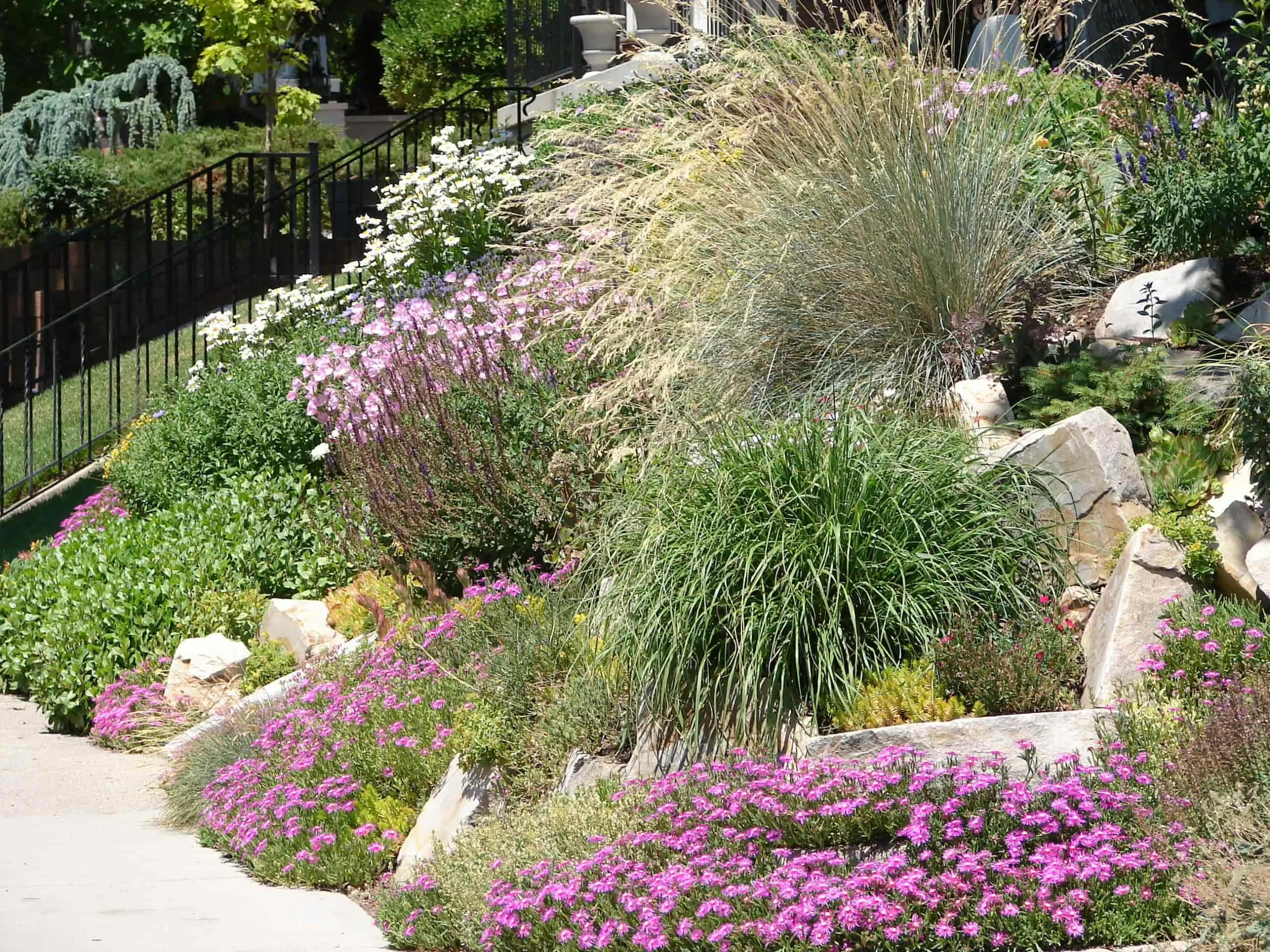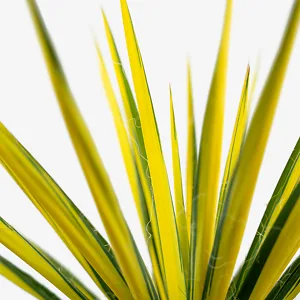
Written by s • Xeric Gardening – 5 Tips for Using Less Water
There is a big push these days to use less water on our gardens. Periods of drought, limitations on city water supplies, concerns about long-term freshwater availability, and increased costs to home-owners – all these things point in the direction of ‘water-wise’ gardening. There is also much more emphasis on growing trees suited for your local region, rather than struggling to grow plants from moister climates, and it all makes a lot of sense.
When it comes to reducing water usage, there are three approaches taken. Growing plants that need less water and are more drought-resistant is one. Designing ways to reduce the loss of water from your soil is another. As well, applying the water you do so that it actually reaches your plants is very much worth considering, especially if reducing your water bill is a concern. Let’s look at these approaches and see how you can reduce water usage while still having a great garden.
5 Simple Tips For Xeric Gardening
1. Choose Drought-resistant Plants – there are lots of great choices out there
2. Prepare Your Soil for Drought – organic additives conserve water in all soils
3. Use Mulch to Reduce Water-loss – exposed soil loses a lot of water
4. Irrigate Efficiently – this alone saves lots of water
5. Add Water-retaining Granules to your Potting Soil – it helps during holidays too
Choose Drought-Resistant Plants

If you consider your whole garden, some things, like hedges or screens, take up a lot of space, and so potentially use a lot of water. Other plants may be small, and in a limited space, so overall you may not save much water by planting tough plants in those areas. Focus on choosing drought-resistant plants for your major planting, and you can still have smaller beds that need some additional watering in summer. Which plants to use will depend on where you live, but large shrubs like Crape Myrtle, Wax Myrtle, Privet, Italian Cypress, Cherry Laurel and Blue Spruce are all good choices. Often plants native to your area will be good choices.
For smaller plants, Nandina, Ninebark and Barberry are all tough once established, and they have the added bonus of being available in a variety of sizes and leaf colors. For the hottest, driest spots, true desert plants like Yucca and Agave will survive even the most extended drought, and they create striking landscape effects too.
Prepare Your Soil for Drought
What kind of soil do you have? Sand, loam, silt or clay? Finding out is a good first step to reduce water usage, because the sandier your soil is, the less water it will hold, and perhaps surprisingly, heavy clay soils have less plant-usable water in them than loam soils do. The best way to increase the water-holding capacity of your soil for the long-haul is to add organic materials. These hold water without reducing drainage, and they even increase the total available water in clay soil.
Almost any organic material will work, but choose ones that are slow to decompose, otherwise the benefits will only last a year or two. When planting or preparing beds, dig a layer of material 2 to 4 inches deep into the soil. Not only will you conserve water, you will be feeding your plants organically too.
All the available additives have pros and cons, and often cost will be a significant factor. Peat moss holds a lot of water, and it is a traditional additive for water-retention, but it breaks down fast, and once dry it is hard to re-wet, and when dry it repels water. Also, there are real concerns about the damage done by harvesting this material, so look for other alternatives.
Garden compost and rotted farm manure are great if you can get them, although garden compost may contain weed seeds. You can compost bails of straw, and use that, and its then an excellent material, but un-rotted it will rob your soil of nutrients. Specialized materials like Coir Dust (from coconut harvesting) and Coco Mulch (from chocolate beans) are excellent too, if you can obtain them.
Use Mulch to Reduce Water Loss
Exposed soil surfaces are a major place for water loss – so covering the ground with anything at all will retain water, as well as keeping the roots of your plants cooler, which encourages better growth. Any material will do, but for an ornamental garden you want to use something attractive.
Mulches are of two kinds – inorganic, like gravel or stones, and organic, like the soil additives mentioned earlier. For the sake of your soil, use organic mulches if you can, but they do need re-applying every few years, while inorganic mulches last longer, especially if laid on top of landscape fabric. Drought-resistant ground-cover plants also reduce water-loss, and create a richer landscape than beds covered in large areas of mulch.
Irrigate Efficiently
While true xeric-gardening tries not to use any added water, you can reduce you overall water-usage in any garden by using more efficient irrigation methods. If you have in-ground irrigation, something as simple as adjusting or changing the heads to produce larger droplets can dramatically increase the percentage of water that reaches the ground, and so conserves water. Especially during dry, windy weather, most of the water coming from sprinkler-heads evaporates before it even reaches the ground. Irrigate during the cooler hours, and don’t irrigate at all when it is windy.
Where you can, switch from overhead spraying to trickle hoses and drip-irrigation. These methods put the water right where the roots are, lose almost nothing to evaporation, and really cut your water use. Place these lines underneath mulch, not on top. Dry mulch is a better insulation from water loss than wet mulch, and it’s the roots that want the water, not your mulch.
Add Water-Retaining Granules to Your Potting Soil
There is a lot of interest in synthetic water-retaining granules, and some of them work well. They are best for container-growing – a place where a lot of water can be used over a season – because the quantities needed in garden soil is too great to be practical. Also, they only last a couple of years or so, while organic additives last longer.
These granules hold hundreds of times their weight in water, while not blocking drainage. Adding them to your potting soil will reduce the frequency of water, meaning you can leave your plants for longer – useful when taking a holiday – and by watering less often your season usage will be very much reduced.
Overall, your garden doesn’t have to look like the Mohave Desert to be water-efficient. By adopting some of these ideas, and choosing more drought-resistant plants, you will see a dramatic reduction in your water usage while still enjoying a beautiful garden.





